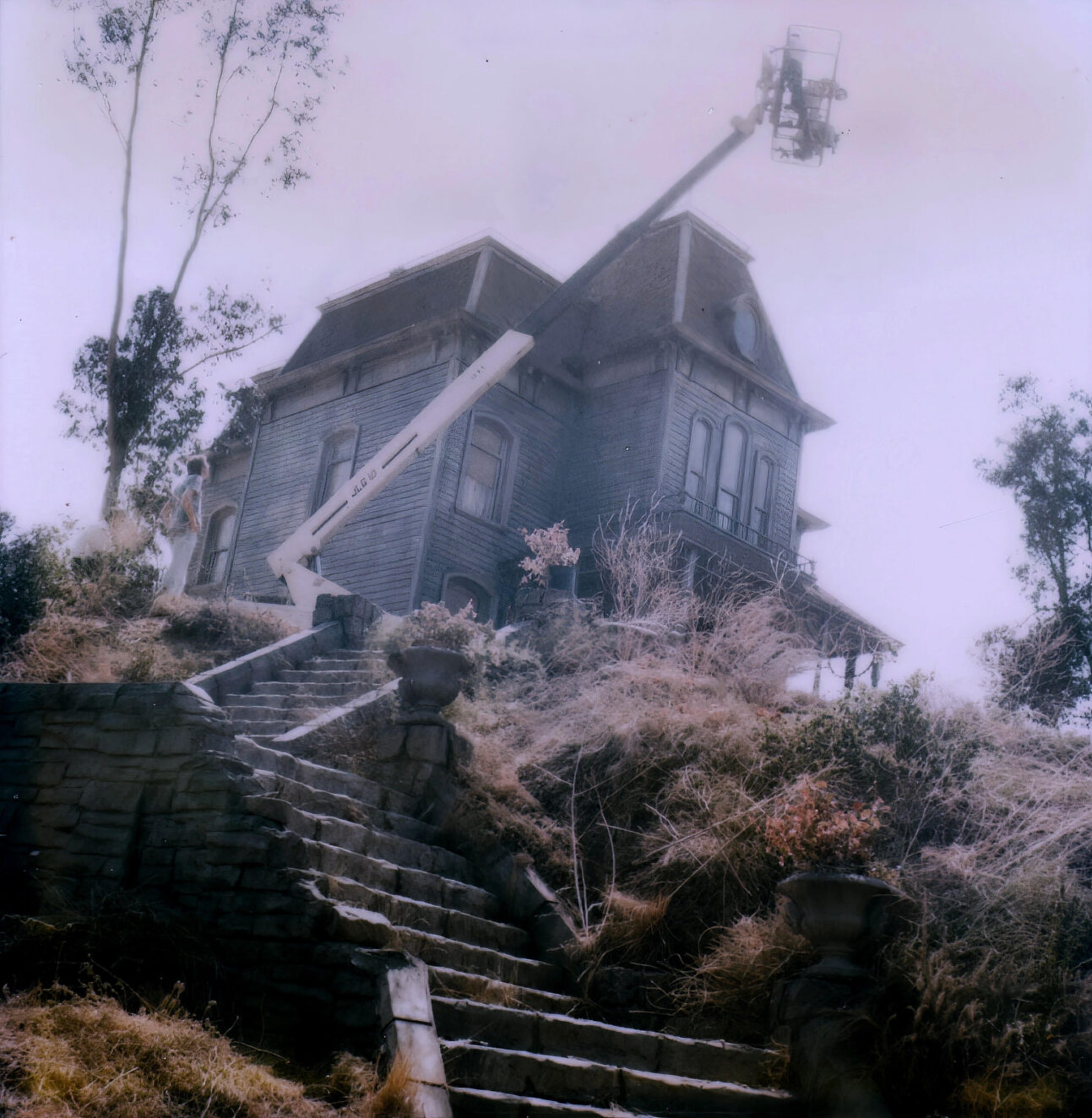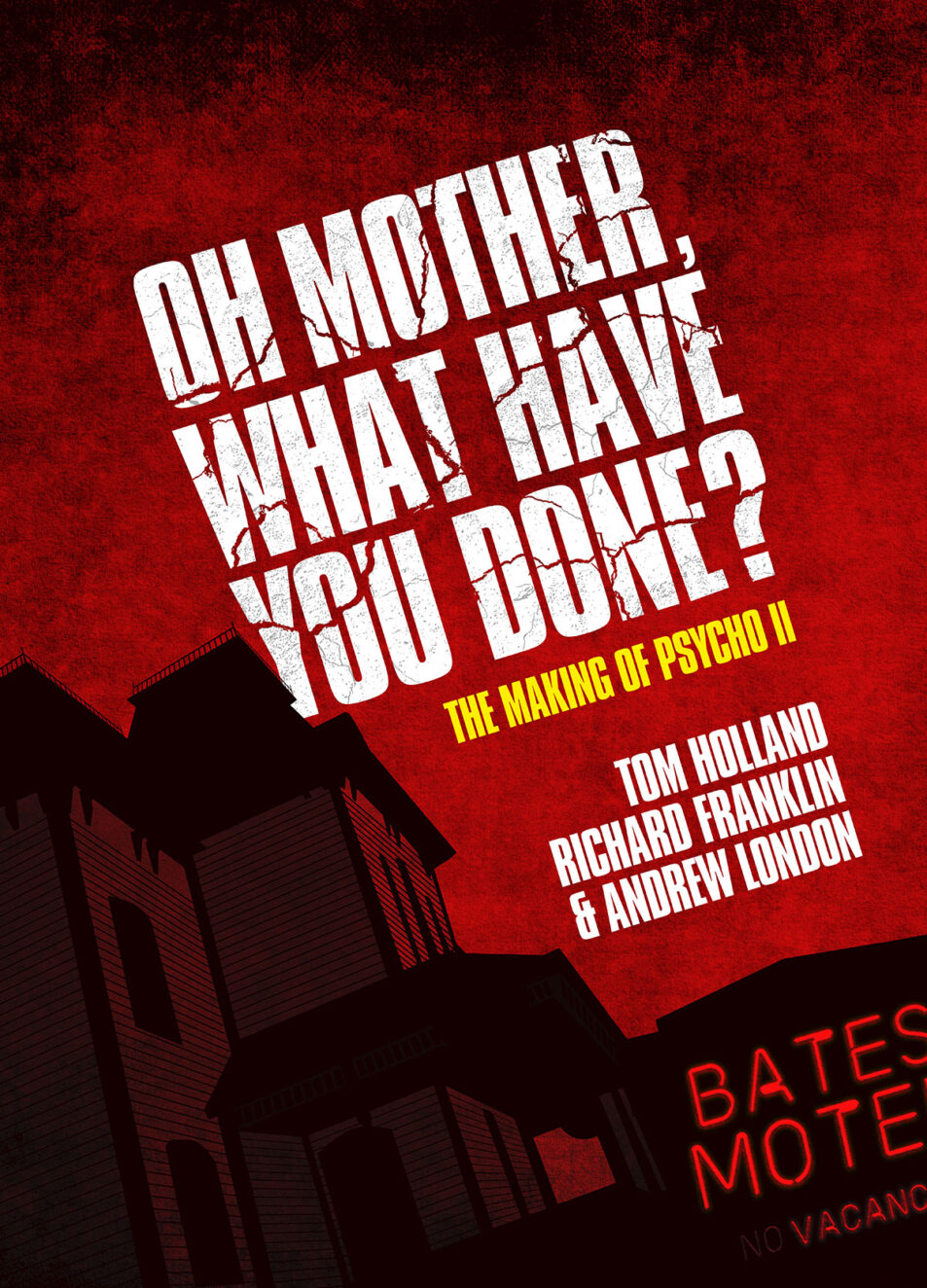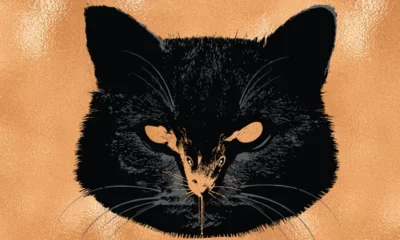Books
Celebrate Edgar Allan Poe’s Birthday with These 13 Classic Tales of Terror

Edgar Allan Poe and I go way back. No really! In a very real way, he was my introduction to horror. I was in the fifth or sixth grade when I first picked up a book that featured “The Tell-Tale Heart” in it. The story shook me to my core. I was hooked, and there was no turning back!
Since then, I’ve owned numerous copies of his complete works, including one blood-stained copy that is a story best left for another day. Today, however, is Poe’s birthday, and I can think of no better way to celebrate than by sharing 13 of his stories and poems that I would consider essential reading for anyone just discovering the author for the first time.
It goes without saying that not all of these are the most popular, but stories that have stuck with me regardless. Take a look, and let me know your favorites in the comments below!
Edgar Allan Poe: The Essentials
#1 “The Tell-Tale Heart”
Now this is the point. You fancy me mad. Madmen know nothing. But you should have seen me. You should have seen how wisely I proceeded—with what caution—with what foresight—with what dissimulation I went to work.
Since it was the story that started it all for me, it’s the story that starts this list. Poe’s classic tale of obsession and guilt is one that creeps under the skin and draws the reader into the narrator’s tale. What I have always found interesting, however, is that Poe never uses pronouns or other descriptors for the narrator, yet readers almost always assume it is a man.
There are some of you right now scratching your head, thinking, “No, it says the narrator is a man!” Nope, go back and read it sometime. I think Poe knew exactly what he was doing in this. He left that bit of the story to our own minds and psychology, and how interesting that for nearly 180 years, so many have read it the same way.
#2 “The Bells”
In the silence of the night,
How we shiver with affright
At the melancholy menace of their tone!
For every sound that floats
From the rust within their throats
Is a groan.
Poe’s 1845 poem is a bit of mystery in literary circles and is most often analyzed for its musical, rhythmic, and onomatopoeic language, all of which has value and I would never detract from years of scholarly study and opinion.
But…
So much of Poe’s work delved deep into the psyche and I cannot help but wonder, even more as an adult who sometimes has anxiety when surrounded by a great deal of noise, if there wasn’t more going on in this poem. It’s said Poe wrote the poem based on the sounds he heard from his window near Fordham University. If he was surrounded night and day by these various ringing bells, is it not possible that he too was feeling the pressure of that constant noise?
#3 “The Oval Portrait”
I had found the spell of the picture in an absolute life-likeliness of expression, which, at first startling, finally confounded, subdued and appalled me.
Poe’s tales contained a plethora of horrific devices but few were as insidious as the painting in “The Oval Portrait,” the tale of an artist so obsessed with his work that he pushes away every other thing in his life, including his young wife, until the day he asks her to sit for him for a portrait.
Unlike Oscar Wilde’s The Picture of Dorian Grey which would be published five decades later, this painting did not preserve the life of its subject. Instead, with each brushstroke, the young wife faded, finally dying as the painting was completed. It is a short tale, but an effective one that lives on as a masterpiece of storytelling for those who dig deeper into the author’s work than the few most commonly read stories and poems.
#4 “The Facts in the Case of M. Valdemar”
Yes;—no;—I have been sleeping—and now—now—I am dead.
Well over 130 years before films like Cannibal Holocaust tempted us to believe that what we were experiencing on the screen was, in fact, real, Poe published “The Facts in the Case of M. Valdemar,” in such a way that it lead the public to believe the story was the recounting of a factual account rather than a fictional story.
The story is undeniably a strange one. A doctor, enthralled by the idea and practice of mesmerism aka hypnosis, convinces a friend who is dying to allow him to mesmerize him as death encroaches to see if the process can actually stop death. What follows is a horrific tale. The man dies, but cannot move on. He is caught, in the mesmeric state, trapped in a dead body for seven months, much to the growing terror of his friends and acquaintances.
When the mesmerist finally decides it is time to awaken the man, well, that’s when things become truly terrifying.
#5 “The Murders in the Rue Morgue”
Coincidences, in general, are great stumbling-blocks in the way of that class of thinkers who have been educated to know nothing of the theory of probabilities—that theory to which the most glorious objects of human research are indebted for the most glorious of illustration.
Of Edgar Allan Poe’s myriad accomplishments, one that surprises most is that he is given credit for writing the first modern detective story with “The Murders in the Rue Morgue,” a tale of a seemingly impossible murder and the detective who sets out to solve it. C. Auguste Dupin, the “detective” in question, is also one of Poe’s few recurring characters who would later turn up in “The Purloined Letter” and “The Mystery of Marie Roget.”
In my mind, this is one if Poe’s most brutal works. The level of gore rivals anything else the author ever wrote. One victim is found with multiple bones broken beneath her window, her throat cut so deeply that her head falls off when the body is moved. The other woman is strangled to death and her body is stuffed up a chimney.
#6 “The Masque of the Red Death”
There was much of the beautiful, much of the wanton, much of the bizarre, something of the terrible, and not a little of that which might have excited disgust
“The Masque of the Red Death” has been on a lot of horror fans’ minds in the last year as we’ve stared down the Covid-19 pandemic, watching friends and family become ill. It was, in its way, a prescient tale, yet one built on historic precedent, as well.
Prince Prospero, in an attempt to escape a plague known as the Red Death that is ravaging the land, locks himself away in an abbey with his fellow nobles. He decides to throw a masked ball to entertain his friends. The party takes place in seven rooms, each decorated with a different color. Little does he know that an unexpected guest has infiltrated his soiree. The Plague personified has come to call and soon Prospero and his cohorts, so convinced they were safe from the ravages of the disease due to their wealth and status, succumb to bloody death.
It’s a harrowing tale, and as I said, one that we’ve seen in our own way play out in recent months. Let us hope, this time, that we’ve learned our lesson.
https://www.youtube.com/watch?v=MRNoFteP3HU
#7 “The Cask of Amontillado”
The thousand injuries of Fortunato I had borne as I best could; but when he ventured upon insult, I vowed revenge.
No one wrote revenge quite like Edgar Allan Poe. The man just had a knack for it, and this is, by far, one of his best.
The author places us in the shoes of Montresor, a man brought low, who has blamed no few of his current troubles on his “friend” Fortunato. Under the guise of asking the man for his opinion on a cask of wine the narrator recently purchased, he lures him into the family’s cellars where he proceeds to wall him up alive, leaving the man to a slow and agonizing death.
What is interesting is that, though Montresor repeatedly blames Fortunato for various insults, he never really names them. The reader is left to wonder whether the man ever actually did Montresor any harm, or if he was simply the scape-goat for Montresor’s frustrations. Regardless, the ending is brutal as Fortunato shouts repeatedly for Montresor to stop what he is doing and he man simply mocks his cries for help.
#8 “The Raven”
Presently my soul grew stronger; hesitating then no longer,
Sir,” said I, “or Madam, truly your forgiveness I implore;
But the fact is I was napping, and so gently you came rapping,
And so faintly you came tapping, tapping at my chamber door,
That I scarce was sure I heard you”— here I opened wide the door; —
Darkness there, and nothing more.
Sadness and loss pervades “The Raven,” Poe’s poem which finds an unnamed narrator tormented by a Raven who enters his home repeating “Nevermore” over and over again.
Filled with imagery and metaphors for Death, the narrator waivers between his desire to move on from the loss of his dearest love, Lenore, and his abject desire to hold onto everything she was to him. We’ve all been there, right? There is an incessant dread that clings to the poem, growing toward its end as the man comes to terms with the fact that the Raven, and his grief, may never leave again.
#9 “Ligeia”
And, indeed, if ever that spirit which is entitled Romance-if ever she, the wan and the misty-winged Ashtophet of idolatrous Egypt, presided, as they tell, over marriages ill-omened, then most surely she presided over mine.
Another tale of obsession and loss, “Ligeia” is the tale of a woman of unconventional beauty with whom the narrator was deeply in love, though he is not entirely certain how she came to be in his life, nor can he even remember her family name. Still, he loved her until she became ill, wasting away, and died. Later on, the narrator remarries a more conventional young woman who falls ill, as well, slowly succumbing to some unknown presence that takes her over.
Did Ligeia ever truly leave? The story was one of Poe’s earliest and also one that he revised and had reprinted numerous times during his lifetime. It was in the story that the poem “The Conqueror Worm” was born as well, written by Ligeia.
#10 “The Imp of the Perverse”
There is no passion in nature so demoniacally impatient, as that of him who, shuddering upon the edge of a precipice, thus meditates a Plunge.
Yet another meditation on guilt and conscience, “The Imp of the Perverse” begins as an essay written by the narrator, a treatise on the self-destructive nature of humanity. As the story begins to change, however, we learn that our narrator, himself, has murdered a man by most ingenious means and has reaped the benefits of the man’s death through a rather large inheritance.
The more the narrator speaks, the more obsessed he becomes with the idea of confession which leads to a compulsion to do just that. The Imp of the Perverse caused him to act, and now he must pay for his sins…
#11 “The Premature Burial”
The boundaries which divide Life from Death are at best shadowy and vague. Who shall say where the one ends, and where the other begins?
The thought of being buried alive is terrifying. In the 21st century the likelihood of it happening is miniscule, but in the 1800s it was a very real fear. Poe plays on that fear beautifully in “The Premature Burial,” the tale of a man prone to cataleptic trances that leave him in a death-like state. He lives in fear of being buried alive and spends his days obsessively putting every stop-gap imaginable in place to keep it from happening.
When he wakes to find himself presumably entombed, his every nightmare becomes real and the claustrophobic tale becomes all the more terrifying.
https://www.youtube.com/watch?v=H86mlOMCA1Q
#12 “The Pit and the Pendulum”
…the agony of my soul found vent in one loud, long and final scream of despair.
Poe’s over-the-top tale of the Spanish Inquisition comes complete with a giant, razor-sharp pendulum swinging down from the ceiling over a man tied to a table. Now, his tale was not historically accurate, but I don’t think he wanted it to be.
In “The Pit and the Pendulum” Poe brought together his talents for communicating existential dread, guilt, and survival in a story that is both gripping and terrifying until its final moments. There is a reason why this one is often on a must-read list for the author’s work. IF you haven’t read it, do it now.
#13 “The Fall of the House of Usher”
Not hear it? –yes, I hear it, and have heard it. Long –long –long –many minutes, many hours, many days, have I heard it –yet I dared not –oh, pity me, miserable wretch that I am! –I dared not –I dared not speak! We have put her living in the tomb!
This is, by far, one of Poe’s most complicated tales, and one that digs deep into themes of isolation and family and responsibility.
The narrator rushes to the aid of his friend Roderick to discover a family estate that is crumbling around him. It is haunted but by what and whom and what will happen if the walls come tumbling down?
It has been one of my favorites since I first read it, and I have returned to it over and over throughout the years.
Listen to the 'Eye On Horror Podcast'

Books
‘Alien’ is Being Made Into a Children’s ABC Book

That Disney buyout of Fox is making for strange crossovers. Just look at this new children’s book that teaches children the alphabet via the 1979 Alien movie.
From the library of Penguin House’s classic Little Golden Books comes “A is for Alien: An ABC Book.

The next few years are going to be big for the space monster. First, just in time for the film’s 45th anniversary, we are getting a new franchise film called Alien: Romulus. Then Hulu, also owned by Disney is creating a television series, although they say that might not be ready until 2025.
The book is currently available for pre-order here, and is set to release on July 9, 2024. It might be fun to guess which letter will represent which part of the movie. Such as “J is for Jonesy” or “M is for Mother.”
Romulus will be released in theaters on August 16, 2024. Not since 2017 have we revisited the Alien cinematic universe in Covenant. Apparently, this next entry follows, “Young people from a distant world facing the most terrifying life form in the universe.”
Until then “A is for Anticipation” and “F is for Facehugger.”
Listen to the 'Eye On Horror Podcast'
Books
Holland House Ent. Announces New Book “Oh Mother, What Have You Done?”

Screenwriter and Director Tom Holland is delighting fans with books containing scripts, visual memoirs, continuation of stories, and now behind-the-scenes books on his iconic films. These books offer a fascinating glimpse into the creative process, script revisions, continued stories and the challenges faced during production. Holland’s accounts and personal anecdotes provide a treasure trove of insights for movie enthusiasts, shedding new light on the magic of filmmaking! Check out the press release below on Hollan’s newest fascinating story of the making of his critically acclaimed horror sequel Psycho II in a brand new book!
Horror icon and filmmaker Tom Holland returns to the world he envisioned in 1983’s critically acclaimed feature film Psycho II in the all-new 176-page book Oh Mother, What Have You Done? now available from Holland House Entertainment.

Authored by Tom Holland and containing unpublished memoirs by late Psycho II director Richard Franklin and conversations with the film’s editor Andrew London, Oh Mother, What Have You Done? offers fans a unique glimpse into the continuation of the beloved Psycho film franchise, which created nightmares for millions of people showering worldwide.
Created using never-before-seen production materials and photos – many from Holland’s own personal archive – Oh Mother, What Have You Done? abounds with rare hand-written development and production notes, early budgets, personal Polaroids and more, all set against fascinating conversations with the film’s writer, director and editor which document the development, filming, and reception of the much-celebrated Psycho II.

Says author Holland of writing Oh Mother, What Have You Done? (which contains an afterward by Bates Motel producer Anthony Cipriano), “I wrote Psycho II, the first sequel that began the Psycho legacy, forty years ago this past summer, and the film was a huge success in the year 1983, but who remembers? To my surprise, apparently, they do, because on the film’s fortieth anniversary love from fans began to pour in, much to my amazement and pleasure. And then (Psycho II director) Richard Franklin’s unpublished memoirs arrived unexpectedly. I’d had no idea he’d written them before he passed in 2007.”
“Reading them,” continues Holland, “was like being transported back in time, and I had to share them, along with my memories and personal archives with the fans of Psycho, the sequels, and the excellent Bates Motel. I hope they enjoy reading the book as much as I did in putting it together. My thanks to Andrew London, who edited, and to Mr. Hitchcock, without whom none of this would have existed.”
“So, step back with me forty years and let’s see how it happened.”

Oh Mother, What Have You Done? is available now in both hardback and paperback through Amazon and at Terror Time (for copies autographed by Tom Holland)
Listen to the 'Eye On Horror Podcast'
Books
Sequel to ‘Cujo’ Just One Offering in New Stephen King Anthology

It’s been a minute since Stephen King put out a short story anthology. But in 2024 a new one containing some original works is getting published just in time for summer. Even the book title “You Like It Darker,” suggests the author is giving readers something more.
The anthology will also contain a sequel to King’s 1981 novel “Cujo,” about a rabid Saint Bernard that wreaks havoc on a young mother and her child trapped inside a Ford Pinto. Called “Rattlesnakes,” you can read an excerpt from that story on Ew.com.
The website also gives a synopsis of some of the other shorts in the book: “The other tales include ‘Two Talented Bastids,’ which explores the long-hidden secret of how the eponymous gentlemen got their skills, and ‘Danny Coughlin’s Bad Dream,’ about a brief and unprecedented psychic flash that upends dozens of lives. In ‘The Dreamers,’ a taciturn Vietnam vet answers a job ad and learns that there are some corners of the universe best left unexplored while ‘The Answer Man’ asks if prescience is good luck or bad and reminds us that a life marked by unbearable tragedy can still be meaningful.”
Here’s the table of contents from “You Like It Darker,”:
- “Two Talented Bastids”
- “The Fifth Step”
- “Willie the Weirdo”
- “Danny Coughlin’s Bad Dream”
- “Finn”
- “On Slide Inn Road”
- “Red Screen”
- “The Turbulence Expert”
- “Laurie”
- “Rattlesnakes”
- “The Dreamers”
- “The Answer Man”
Except for “The Outsider” (2018) King has been releasing crime novels and adventure books instead of true horror in the past few years. Known mostly for his terrifying early supernatural novels such as “Pet Sematary,” “It,” “The Shining” and “Christine,” the 76-year-old author has diversified from what made him famous starting with “Carrie” in 1974.
A 1986 article from Time Magazine explained that King planned on quitting horror after he wrote “It.” At the time he said there was too much competition, citing Clive Barker as “better than I am now” and “a lot more energetic.” But that was almost four decades ago. Since then he’s written some horror classics such as “The Dark Half, “Needful Things,” “Gerald’s Game,” and “Bag of Bones.”
Maybe the King of Horror is waxing nostalgic with this latest anthology by revisiting the “Cujo” universe in this latest book. We will have to find out when “You Like It Darker” hits bookshelves and digital platforms starting May 21, 2024.
Listen to the 'Eye On Horror Podcast'
-

 News3 days ago
News3 days agoThis Horror Film Just Derailed a Record Held by ‘Train to Busan’
-

 Movies3 days ago
Movies3 days agoWatch ‘Immaculate’ At Home Right Now
-

 News4 days ago
News4 days agoRead Reviews For ‘Abigail’ The Latest From Radio Silence
-

 News2 days ago
News2 days agoHome Depot’s 12-Foot Skeleton Returns with a New Friend, Plus New Life-Size Prop from Spirit Halloween
-

 News4 days ago
News4 days agoMelissa Barrera Says Her ‘Scream’ Contract Never Included a Third Movie
-

 Editorial5 days ago
Editorial5 days agoRob Zombie’s Directorial Debut Was Almost ‘The Crow 3’
-

 News1 day ago
News1 day agoWoman Brings Corpse Into Bank To Sign Loan Papers
-

 News3 days ago
News3 days agoA24 Joins Blockbuster Movie Club With Their Biggest Opening Ever





























You must be logged in to post a comment Login